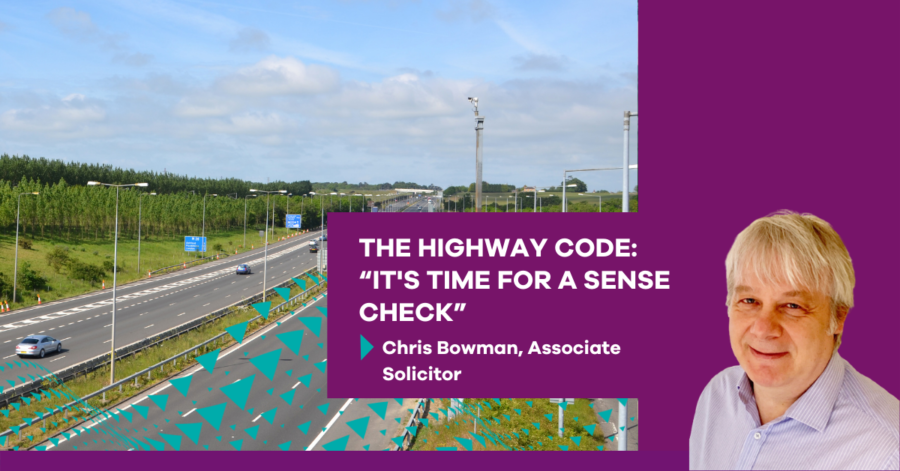The Highway Code: “It’s time for a sense check”


“Chaos following Highway Code changes leads to rise in cash for crash scam risk”
No, not my assessment, but the apocalyptic headline from the Daily Express on 18.2.22.
You might recall that at the end of January, the Highway Code was amended with mostly modest changes aimed at improving road safety. I am pleased to say that, contrary to the Daily Express, I’ve not encountered the chaos on Britain’s roads it describes – although I have to say that the A38 from the M1 to Lichfield can sometimes resemble an extended audition for the “Fast and The Furious” franchise.
As a personal injury lawyer for over 20 years, changes to legislation and guides are my bread and butter; I’m well informed and it’s interesting to see how these things are covered. The conclusion though is they are not covered well, with the focus being on conflict and sensationalism – no, I didn’t think Highway Code changes could be sensational either!
Just to recap, in short here are some of the changes:
Now here is some of the coverage. The Daily Express found the changes to be a rich seam of dire warnings.
“Drivers risk unlimited fines and licence points for not following Highway Code changes” 16.2.22
“Nonsensical” Fury as thousands of Britons demand new Highway Code rules scrapped 17.2.22
The Daily Mail also weighed in with :
“Drivers begin fightback in battle of Highway Code” 30.1.22
I think it is time for a sense-check.
The hierarchy of road users is not new, the Highway Code already recognised vulnerable road users.
The rule that drivers of HGVs and cars, who have the potential to do the most harm, should exercise the greatest care, is really just common sense and is already the law in the civil cases we deal with on a day-to-day basis. Although a pedestrian might step out into a road whilst looking at their phone, greater damage is likely to be done by an HGV driver scrolling to the next song on Spotify and the law already reflects this. Here is Baroness Hale in Eagle v Chambers 2003, a case of a pedestrian being run down: “The court has consistently imposed upon the drivers of cars a high burden to reflect the fact that the car is potentially a dangerous weapon”.
Cyclists are not being encouraged to ride down the middle of the road but should ride a modest 0.5 metres from the kerb and on quiet roads can ride in the centre of their lane (no, not the middle of the road). Cyclists do not have everything their own way as the new rules provide for cyclists to move over when it is safe to overtake and for cyclists who ride 2 abreast to move over for vehicles when safe to do so.
As for pedestrians having right of way at junctions, a pedestrian in the process of crossing already had right of way under the old rules. The new rules just extend this so that those waiting to cross have right of way. I think there is a reasonable debate to be had as to whether this might create hazards for vehicles stopping and being rear ended, but this really isn’t the seismic shift the press would have you believe.
In fairness to the press, even the Daily Express, at least they are raising awareness of the changes which otherwise had little publicity. It would though be more productive if there was a sensible calm dialogue that properly reflected these relatively modest amendments to the rules of the road.